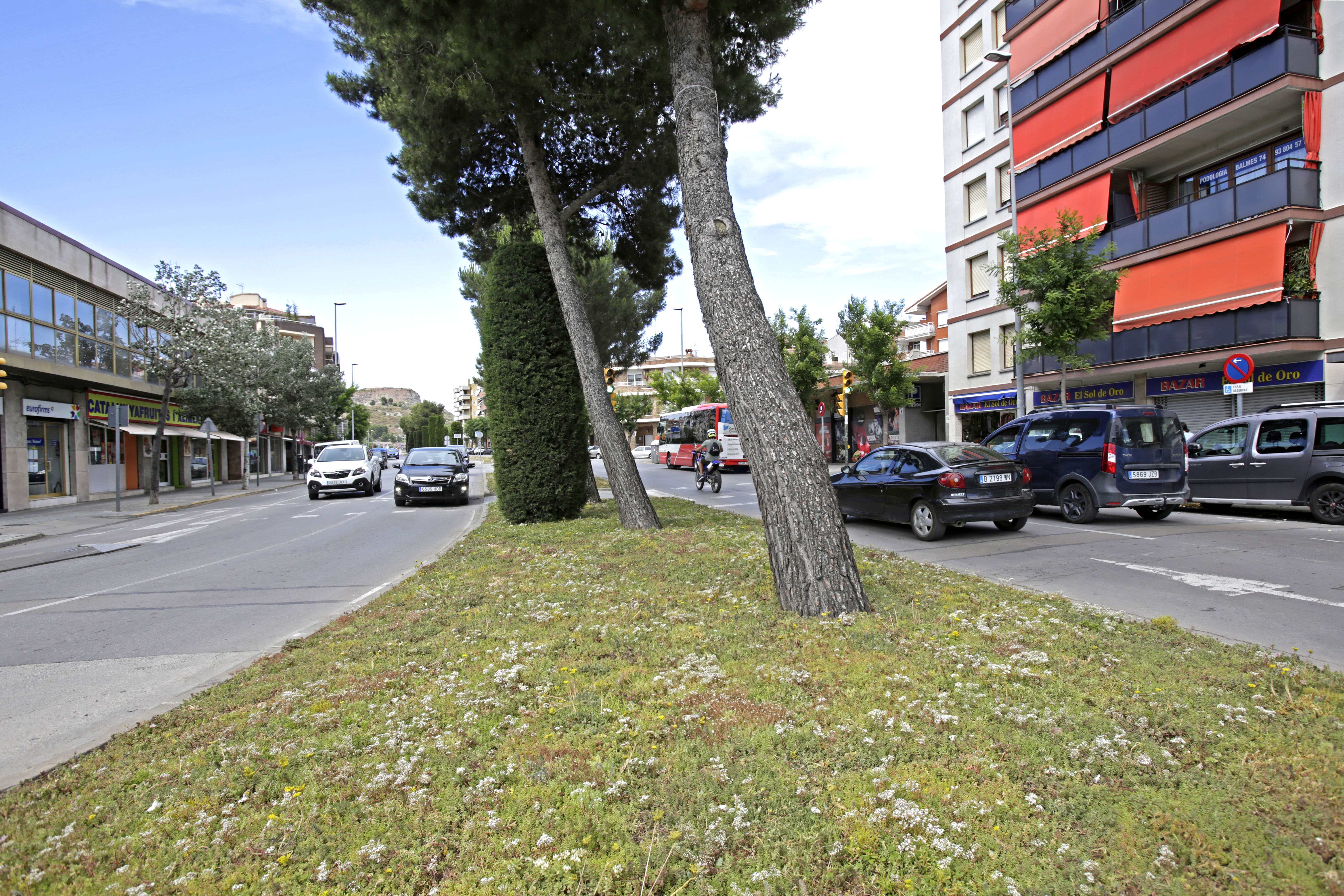Catalan Municipality of Igualada chooses Sedum blankets for new urban green areas
Posted on Wednesday 11 July, 2018In line with the current trend in major cities to increase landscaped areas, the Catalan Municipality of Igualada -65 kilometres west from Barcelona- recently covered its central reserves by replacing the existing gravel with vegetation blankets. The city in Catalonia opted for Sedum blankets because of its low maintenance, but also in order to improve the air quality for its citizens and combat the effects of climate change.
Precultivated Sedum blankets around pine and cypress trees
The total surface of the newly landscaped area covers more than 500 m2 and combines a covering base of vegetation blankets with the already existing high volume Mediterranean vegetation composed of pine and cypress trees. The coverage was achieved by the Igualada Parks and Municipal Gardens Team during the month of June 2018. They replaced the existing gravel that covered the ground of several central reserves with Sedum blankets. These Sedum mats are precultivated in the nurseries of Sempergreen in Constantí (Tarragona, Spain) and contain more than 12 varieties of Sedum.
Improving urban climate
The goal of the Municipal technicians is to increase the amount of urban green areas by creating natural spaces with low maintenance plants adapted to their territory. Precultivated Sedum blankets are increasingly used in European and American cities as an instant green and inexpensive solution to enlarge natural green spaces. Green spaces in the city provide comfort to the inhabitants by improving air quality, providing moisture and reducing urban heat, at the same time giving a more pleasant outlook.
Moreover, the organic surface absorbs rainwater, reduces the risk of flooding and also reduces urban noise pollution. The different varieties that make up the Sedum carpets offer a varied bloom over a long period ranging from March to October, herewith creating new habitats for pollinating insects, which are vital for the future of our planet.
Sedum originates from the Mediterranean
Sedum is a succulent plant, of which more than 400 species and thousands of different varieties have been identified all over the planet. Many Sedum species originate from the northern hemisphere, especially around the Mediterranean, where they can be found in their natural habitat. Its metabolism allows it to absorb carbon dioxide during the night and make photosynthesis during the day, keeping its stomata closed. Thus, the loss of moisture in the leaves is minimized. This gives this plant a great resistance to drought. Sedum also withstands heavy frosts, grows flat, has a pronounced autumn color, as well as a pleasant flowering with varied colors throughout the summer.
Watch the video below to see how the Sedum blankets were installed.
